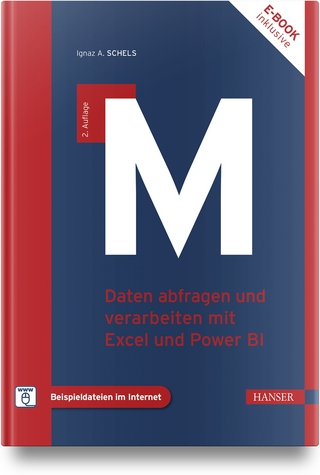
Designing Applications with MSMQ
Addison Wesley (Verlag)
978-0-201-32581-2 (ISBN)
- Titel ist leider vergriffen;
keine Neuauflage - Artikel merken
"This book is an invaluable resource for learning about MSMQ." --Peter Houston MSMQ Product Manager, Microsoft Corporation Microsoft Message Queue Server (MSMQ)--which is incorporated into the newest version of Windows NT--brings asynchronous transaction processing (TP) capabilities to the Windows platform for the first time. MSMQ combines the high performance and robustness of mainframe transaction processing with a flexibility of objects, an administrative ease-of-use, and an ability to scale. As such MSMQ is a key technology contributing to the growth of Internet commerce and intranet distributed processing. Whether you are a Windows programmer who is new to transaction processing or a UNIX programmer who wants to learn more about MSMQ, this book will introduce you to the topic and show you how to develop transaction-processing applications using the MSMQ technology. Designing Applications with MSMQ offers an overview of the general design of queued messaging applications and a discussion on how MSMQ can be used in two-tier, three-tier, Web, and component architecture applications.This book also provides a detailed description of MSMQ architecture, queue, and message properties, as well as a detailed description of how MSMQ interacts with other transaction technologies, such as MTS and SQL Server.
A step-by-step tutorial shows you how to write MSMQ applications using COM components, Visual Basic, Visual C++, and the MSMQ API. In addition to the tutorial, this book offers a comprehensive introduction to transaction processing and develops a full-scale application using MSMQ that illustrates the technology's power and potential for this emergent field. 0201325810B04062001
Alan Dickman is a Chief Technologist at PSW Technologies, the leading provider of software development and systems integration services to the technology industry. He is a recognized industry expert in the design, implementation, and testing of enterprise-wide, three-tier, mission-critical, distributed computing systems. Alan addresses technical audiences worldwide on MSMQ concepts and features and has contributed articles to such publications as Information Week and Patricia Seybold's Distributed Computing Monitor. 0201325810AB04062001
1. Distributed Architectures and Microsoft Message Queue Server (MSMQ).
Introduction to MSMQ Application Architectures.
Using MSMQ in Well-Known Distributed Application Architectures.
The Future of MSMQ.
Conclusion.
Resources and References.
2. Overview of MSMQ Architecture and Features.
Selected Definitions.
Programming Interfaces.
Messages and Message Queues.
Sending and Receiving Messages.
MSMQ Architecture.
Integration with non-MSMQ Messaging Environments.
Conclusion.
Resources and References.
3. Properties and Queue Names.
Properties.
Queue Naming.
Conclusion.
Resources and References.
4. An MSMQ Application Using the COM Components.
Overview of Hello World.
MSMQ COM Components.
Queue Creation.
Locating Queues.
Creating the Hello World Sender Form.
Opening Queues and Sending Messages.
Receiving Responses.
Closing Queues.
The Hello World Receiver.
Summary.
Resources and References.
5. An MSMQ Application Using the MSMQ API.
Overview of Hello World.
Working with Properties in the MSMQ API.
Creating Queues.
Locating Queues.
Opening, Closing, and Deleting Queues.
Receiving Messages and Sending a Response.
The Hello World Sender.
Sample Program Output.
Conclusion.
Resources and References.
6. MSMQ Queue and Message Design Considerations.
Hello World Program Analysis.
Queue Options.
Messages and Message Property Options.
Summary.
Resources and References.
7. Solutions to Message Problems.
Converting Message and Correlation IDs to Strings.
Request and Response Correlation.
Asynchronous Message Processing.
Handling Variable-Length Messages.
Multipart Message Sequences.
Object Shipping.
Working While Off Line.
Conclusion.
Resources and References.
8. Improving Message Tracking and Recovery.
Overview of MSMQ Facilities.
Making Messages Recoverable.
Setting Up Message and Queue Journals.
Tracing Message Routing.
Acknowledging Messages.
Recovering and Tracing Messages.
Conclusion.
Resources and References.
9. MSMQ Security.
Authentication.
Message Encryption.
MSMQ Access Controls.
Managing Queue Access Programmatically.
Access Event Auditing.
Conclusion and Recommendations.
Resources and References.
10. Introduction to Transaction Processing.
Basics of Transaction Processing.
The ACID Properties.
Distributed Transaction Processing.
Transactional Queued Messaging.
When to Use On-Line or Queued Transactions.
Conclusions and Recommendations.
Resources and References.
11. Implementing Transactions and Assessing Performance.
Basics of Transactional Messaging.
External Transactions.
Internal Transactions.
In-Order Delivery.
Conclusion.
Resources and References.
Appendix A: COM Component and MSMQ API Reference.
COM Components.
MSMQ API Functions.
Queue and Message Properties.
Appendix B: Configuring Visual C++ and Visual Basic for MSMQ.
Creating and Configuring a Project in Visual C++.
Creating and Configuring a Project in Visual Basic.
Appendix C: MSMQ Performance.
Messaging Performance.
Conclusions and Recommendations.
Index. 0201325810T04062001
| Verlagsort | Boston |
|---|---|
| Sprache | englisch |
| Maße | 189 x 233 mm |
| Gewicht | 660 g |
| Themenwelt | Informatik ► Betriebssysteme / Server ► Windows |
| Informatik ► Netzwerke ► Mail Server | |
| ISBN-10 | 0-201-32581-0 / 0201325810 |
| ISBN-13 | 978-0-201-32581-2 / 9780201325812 |
| Zustand | Neuware |
| Haben Sie eine Frage zum Produkt? |
aus dem Bereich


